|
Superheroes: From Page to Stage Part One: Comic Books For part one of this post, please click on the above link to go back and refresh your memory. Part Two, which you are about to read, discusses the origin of the supersuit by way of a short-ish history lesson on famous athletes and the clothes they wore to perform their amazing feats. It then goes on to break down the class of superheroes into seven different archetypes based on their powers or abilities. The rest is a glimpse into the process of a famous supersuit designer. The AerialistJules Leotard was a French acrobat and aerialist who was born in 1838 and was famed for inventing the trapeze act. His name was given to the garment he invented for his high flying profession. Jules didn't start out as a famous flashy circus performer, he started out working for his father while he was in law school. His father was a gymnastics instructor in the South of France who ran a gym with a swimming pool. It was Jules' job to open and close the skylights over the pool, by pulling the long ropes that levered the slats. Jules would swing from one set of ropes to the next over the pool with what must have been a fair amount of showing off. He was also in the habit of working out on the parallel bars. By combining the two activities, attaching a bar between the ropes to create an easier hand hold, he invented a whole new entertainment, the pool functioning as his safety net. Apparently it was what he did to relieve the stress of finishing law school and studying to pass the bar exam. Naturally people started to show up just to watch his performance, including a Parisian circus owner. After an interview with Jules' father, the boy was swiftly taken to Paris to join the circus. For his premier performance in 1859, Jules was taken to the circus' seamstress who had her own ideas about what he should wear for his feats of derring-do. However, Jules was contrary and insisted on being dressed in what we would now refer to as a unitard but at the time he called a malliot (French for shirt): an all-in-one knitted suit, stretchy enough to accommodate his need for flexibility, skin-tight to show off his musculature, and aerodynamic so that there was no danger of any piece of his costume becoming entangled with the ropes. Jules insisted that his first costume be simple and elegant: black velvet for the trunk, white for the legs and sleeves as shown in the first photo. Jules performed the world's first flying trapeze act in Paris in 1859 over a pile of mattresses, rather than a pool. His act lasted twelve minutes and included a somersault in mid-air flying from one trapeze to another. He was 21 years old and became a superstar literally overnight. Jules eventually gave in to the circus' desire for opulence and allowed his malliots to get the full-on splashy treatment, with gold embroidery, glass beads, fringe, and brighter colors taking over from the somber black and white. He also sold a lot of picture postcards (below) of his various "revealing" costumes to his many adoring fans. Leotard took his act on the road and by 1867 was so famous he'd had a song written about him, "The Daring Young Man on the Flying Trapeze". Jules died in 1870 from smallpox or possibly cholera, depending on the source, while on tour in Spain, but it wasn't until 1886 that his maillot became commonly referred to as a leotard. The StrongmanOther circus performers soon adopted this garment, especially the strongman. An early French strongman, Luis Uni, aka Apollon the Mighty, is wearing a garment obviously copied from Jules Leotard's publicity postcards (see below). The remaining pictures are of famed German bodybuilder, Eugene Sandow who was born the same year that the first photo of Jules Leotard was taken, in 1867. Eugene wasn't his real name. He was born Friedrich Muller, the son of Lutheran parents who wanted Friedrich to become a minister. Friedrich left Prussia to travel Europe; he literally ran away to join the circus, thereby avoiding proscribed service in the Prussian army, and changing his name along the way to avoid detection. Because Eugene was interested in developing the ideal masculine body shape, he used his circus touring days to visit art museums all over Europe to measure Greek and Roman statues and then built his physique to those exact proportions. He was so focused on this pursuit of body-building (a term he coined) that he authored five books on the subject over the course of his lifetime. For this reason, Sandow is considered the father of modern body building. But let us go back to the start of his skyrocket to fame. Eugene was 25 and had already achieved a certain level of notoriety as a circus act in Europe when he began performing in music halls all over Britain. It was then that American entrepreneur and master showman, Florence Ziegfeld caught his act and persuaded him to come to America to perform in the 1893 Chicago World's Fair. Some of his lifting feats included the 312 lb one-arm dumbbell clean and the 1.500 lb one-handed stone lift. As superhuman as these feats of strength sound, it was Ziegfeld who noticed that the audience was more fascinated by the sight of Eugene's bulging muscles than by how much weight he could lift. In order to make the most out of the crowd's fascination with Eugene's physique, his leotard was altered into a more familiar shape: sleeveless, with high-cut legs and a low-cut neckline to expose more of his chest. Ziegfeld also had Eugene change his act to include more obvious theatrics like posing while flexing, and breaking out of chains locked around his chest. Eugene died in 1925, ostensibly from a stroke brought on by a feat of strength he performed a few years earlier when a traffic collision forced him to lift his wrecked car out of a ditch single-handedly. However, sources agree that his death was more likely caused by syphilis; the steep price he paid for his perfect body and universal sex appeal which earned him a wife and many girlfriends, as well as at least one boyfriend. His angry wife decreed that his grave would remain unmarked, yet his legacy lives on in the form of the statuette given to the winner of the Mr. Olympia contest, "The Sandow". The SwimmerAlfred Hajos was born Arnold Guttmann in Hungary in 1878. When Arnold was thirteen, his father drowned in the Danube. On that tragic day, little Arnold vowed he would become really good at swimming, and to show the world that he meant it, he adopted a new name, Alfred Hajos; hajos means sailor in Hungarian. Flash forward a mere 5 years. Alfred was eighteen years old and an architecture student at Polytechnical University in Hungary when it was announced that the first modern era Olympic Games were to be held in Athens in 1896. Alfred finally obtained, with considerable difficulty, permission from his Dean to miss classes in order to compete in the swimming events. There were three open events for swimming: the 100M, 500M, and 1200M freestyle, to be held on consecutive days. Alfred chose to enter the 100M and 1200M, but not the 500M so that he would have a day of rest between races. The races were to be swum in the Mediterranean Sea which was 55 degrees Fahrenheit with 12 foot high waves that week. Undoing Sandow's alterations to Jules Leotard's original design, Alfred raised the neckline, added short sleeves, and lengthened the legs to end slightly above mid-thigh. Because the garment had always been knitted from wool for its stretchiness, a bonus side effect was that wool is more impervious to water and makes a better fiber choice for swimwear than cotton or flannel, which had been the previous fiber choices. Alfred swam his way to winning gold medals in both events wearing his version of a leotard, ironically and probably unknowingly echoing the black and white of Jules' original, just in reverse. The international attention on the Olympics and Alfred's gold medals spawned an interest in recreational swimming all over the world and soon all men were wearing their very own leotards turned swimsuits as popularized by Alfred Hajos. With the advent of vulcanized rubber and synthetic materials becoming more prevalent, this semi-stretchy, heavy when wet garment got a significant boost in fit, function, and popular appeal. By the 1930's, when the photo on the right was taken, swimsuits went back to the strongman cut: sleeveless, low neckline, higher cut legs, and additionally, a really low cut back and side cut-outs It's a wonder the strongman didn't think to show more of his lats and traps. the RunnerJesse Owens was the youngest of 10 children, son of a sharecropper whose family moved from the segregated South to Cleveland, Ohio for better opportunity. He discovered he had a passion for running and joined the junior high track team. His coach let him practice before school because he had a job at a shoe repair shop after school. While he was a student at East Technical High School, he equaled the world record of 9.4 seconds in the 100 yard dash and long jumped 24' 9 1/2" at the 1933 National High School Championship in Chicago. He went on to attend Ohio State University and won a record eight NCAA championships. He continued to work various jobs part-time to afford tuition because he was not on scholarship like the white athletes. He faced many additional hardships because of his race, such as not being able to eat, sleep or use the bathroom in the same facilities as the rest of the team, which was especially challenging when they would travel for competition. He wasn't even allowed to stay in the dorms on campus and had to live off campus. He competed in the 1936 Olympic Games in Berlin and won four gold medals in the 100M, 200M, 400M Relay, and the Long Jump, Although he didn't fight Nazis, he did meet Adolph Hitler and shook his hand before the 100M medal ceremony began. As you can see by the 1936 Olympic Games, Jule's leotard had been severed into two pieces, a tank top and shorts and were de rigueur for all track and field athletes. In just two short years, Superman would make his first appearance and Nazi Germany would be well on its way to invading Poland and starting WW II. America would need all the superheros it could get. The BooksYou may recall that last summer I read two books, Supergods by Grant Morrison and The Secret History of Wonder Woman by Jill Lepore. Another book that started me down this path was a great Half Price Books find Superheroes: Fashion and Fantasy published by the Metropolitan Museum of Art in conjunction with their exhibition in 2008. The exhibition was designed to explore the influence that superheroes and their costumes have had on contemporary fashion. The preface was written by Michael Chabon, a Gen X-er, novelist, and Pulitzer Prize winner (2001). Although I respect his mad writing skills and his knowledge of comic book superheroes, I disagreed vehemently with his essay's premise as both a costume designer and cosplayer. It made me so angry in fact, that I was moved to spend more than a whole year writing about the costumes that superheroes wear. First let me sum up what his feelings are about not just the fans cosplaying superheroes at conventions but the professional actors paid to portray these comic book superheroes in the movies, as well as the designers who make the supersuits: Any attempt to translate the superhero from the page to the stage is preposterous and destined for failure before you even start. The more money you spend, the worse the result. And anyone who is crazy enough to parade around in a superhero costume is at best tawdry and at worst subject to ridicule. He writes: "A superhero's costume is constructed not of fabric, foam rubber, or adamantium, but of halftone dots, Pantone color values, inked containment lines, and all the cartoonists's sleight of hand. The superhero costume as drawn disdains the customary relationship in the fashion world between sketch and garment. It makes no suggestions. It has no agenda. Above all it is not waiting to find fulfillment as cloth draped on a body. A constructed superhero costume is a replica with no original, a model built on a scale of x:1...The graphic purity of the superhero costume means that the more effort and money you lavish on fine textiles, metal grommets, leather trim, the deeper your costume will be sucked into the silliness singularity that swallowed, for example, Joel Schumacher's Batman and Robin and their four nipples." He goes on to write: "One may easily find evidence for this claim at any large comic-book convention by studying the spectacle of the brave and bold convention attendees, those members of the general comics-fan public who show up in costume and go shpatziring around the ballrooms and exhibition halls dressed as Wolverine, say, or the Joker's main squeeze, Harley Quinn. Without exception even the most splendid of these get-ups is at best a disappointment. Every seam, every cobweb strand of duct-tape gum, every laddered fishnet stocking or visible ridge of underpants elastic--every stray mark, pulled thread, speck of dust--acts to spoil what is instantly revealed to have been, all along, an illusion....But realism is not, in fact, merely hopeless. A plausibly heroic physique--rarely as it may be found among convention-goers--is of no avail in this regard nor, cruelly, is even the most fervent willingness to believe in oneself as the man or woman in the cape. Even those costumed conventioneers who go all out, working year round to amass, scrounge, or counterfeit cleverly the materials required to put together, with glue gun, soldering iron, makeup, needle and thread, an accurate Black Canary or Ant-Man costume, find themselves prey to forces implacable as gravity, of tawdriness, gimmickry, and unwitting self-ridicule. And in the end they look no more like Black Canary or Ant-Man than does the poor zhlub in the Venom mask with a three-day pass hanging around his neck." He then goes on to argue for the rest of the essay that there is no such thing as superhero costumes; that there is no minimal element or requirement for superheroes to wear. Their powers are the ONLY thing that make them superheroes. The supersuit therefore is their naked body and the costumed garb has no function, no raison d'etre, because it's not Superman's cape that makes him fly, it's the yellow sun acting upon his alien anatomy, which happens regardless of what he wears over his naked Kryptonian skin. And this is a man who fully admits to his childhood spent wearing his beach towel as cape and pretending he was a superhero named Aztec with secret knowledge of the ancient Mesoamerican martial arts, on the way to the friendly, neighborhood swimming pool, brand new issues of Superman, Spiderman, and Green Lantern clutched in his eager hands. What happened to this imaginative child that killed his ability to willfully suspend his disbelief? And what made the Director of the Metropolitan Museum of Art, Phillipe de Montebello, choose to publish Chabon's preface once he read it? Did Chabon not realize who he was writing it for? At least Montebello got someone else to write the rest of the book: Andrew Bolton, the curator of the Costume Institute who organized the exhibition. Andrew Bolton is a man who believes in the power of costume. The ArchetypesThe interesting thing that Andrew Bolton did with the exhibit (and the book) was take the idea of superhero and break it down into eight different archetypes based on body shape. I used Bolton's eight categories as a starting point, kept three, changed the name of one, eliminated four, and broken one into four more to end up with seven. My arechetypes are based on their powers and abilities and have nothing to do with their fashion sense. If you're interested in Bolton's original ideas, please go read his book; it's very interesting and he knows A LOT about comic books. You'll learn a lot about fashion trends too. However, for my purposes, form follows function and the point of the supersuit is to enhance the superpower, or at least not hinder it. You'll notice that some of these categories are very broad while others are are fairly narrow. You'll also notice that many superheros will fit into more than one archetype. As you read along you might even come up with superheros that don't fit into any of these archetypes. If you do, please let me know. I'd love for this to lead to a larger discussion of the topic. I had a great deal of conversation with the other comic book nerds in my house this weekend as I was defining these different archetypes and figuring out where everyone would fit. As annoying as it was to have the fourteen year old poke holes in my archetypes by challenging them with examples of supervilians, video game characters, manga characters, fringe characters, as well as actual superheroes who didn't behave the way they normally do because of xyz alternative timeline situation, it certainly made me do a better job of defining my terms and defending my choices. So here is the result of of my Memorial Day weekend spent talking about superheros. 1. The Virile ArchetypeThe Virile Archetype is based on hyper-masculinity or femininity. Superheroes who fall into this archetype are known for their super strength and ideal body shape. Much like Eugene Sandow, our circus strongman turned father of body-building, these superheroes are perfect specimens of physical beauty and athletic prowess. There are four sub-categories in this archetype: aliens, humans, gods, and mutants. It could certainly be argued that most if not all superheros belong in this category, but I'm just going to discuss a few. This archetype begins with Superman. He's the original superhero and the origin of the Virile Archetype. He has super strength and a chiseled physique to match. His suit is super tight to better show off all those bulging muscles. He is also an alien and gets his super powers from our yellow sun. Martian Manhunter can also be included in this sub-category. Batman was the second ever superhero and although he was created to be Superman's antithesis (Superman is powered by the sun, Batman does his best work under cover of darkness) he has no superpowers to get the job done. He must use his incredible body to pound the bad guys into submission. Other later human heros in this sub-category would be Luke Cage and Iron Fist. Their street fighting, martial arts skills make them superheros. Wonder Woman is the daughter of Aphrodite and was brought to life by Zeus. She is a perfect specimen of femininity. Thor is the god of thunder, son of Odin the All Father, another perfect specimen of manliness. When humans mess with science, accidents can happen. Bruce Banner was exposed to gamma radiation and became a hyper masculine rage-aholic who smashes everything he sees. Ben Grimm was exposed to space radiation and was permanently (more or less) turned into an orange rock monster and now it's clobberin' time. 2. The Aerodynamic ArchetypeRemember Jules Leotard? He must have seemed like he could really fly. And here we have Superman again. But why, you say? Because he can actually fly. Any human can work to make himself strong, but only some superheros can fly! Robin, of course, is the true descendant of Jules being the son of circus aerialist parents. Jesse Owens gave birth to Flash and Quicksilver. Alfred Hajos' progeny are Aquaman and Sub-Mariner. What do all these guys have in common? They move with alacrity, style, and grace and their suits need to be aerodynamic in order to accommodate them. Outside of the capes, which look great trailing out behind them so that the viewer knows they're flying through the air with the greatest of ease, there's nothing about their suits to hinder their movement. However, Edna Mode will have something to say about capes in another 60 years or so. 3. The Soldier ArchetypeThe idea of a super soldier has been around as long as wars have been around, so basically forever. The early superheros fought Nazis in WWII and writers immediately came up with a way to tip the scales in our favor. Yes, Wonder Woman is here again. As a demi-god and Amazonian Princess, she is a warrior by design as well as birth and is armored as such. Her bracelets deflect bullets, her tiara is a boomerang-like weapon, and her lasso forces the truth out of its occupant. Thor, an Asgardian gpd, is permanently garbed for war with his breastplate, helmet, and weapon of choice, Mjolnir. Captain America was the first superhero who was created from an ordinary human in order to be a super soldier. Ironically, his only weapon is one of defense, a shield. Wolverine, as a member of X-Men, was already a mutant with bone claws that would protrude from his knuckles. Like Steve Rogers, Logan underwent a secret government experiment that turned his skeleton into adamantian. Deadpool's story is very similar. Already a soldier turned mercenary, he was injected with a serum to make any latent mutations in his genes activate. His weapons are his two katana swords, and plenty of guns and ammo. Their best defensive weapon is that the serum made them immortal. Tony Stark, another ordinary human, is a mad scientist if there ever was one. Tony made a pretty snazzy suit of armor that's got an on-board computer, navigation, and weapons system and then he gave one to his friend, War Machine. Other ordinary humans that use weapons to fight bad guys fall into this category as well. That includes all the archers like Green Arrow, Speedy, Hawkeye, as well as the assassins and spies like Black Canary and Black Widow. 4. The Elemental ArchetypePart of the story of human history is our effort to control the elements. There are traditionally only four elements; earth, air, fire, and water. Some Fire superheroes are The Human Torch, Cyclops, Fire, Heatwave, and Black Lightning. Water superheroes are Aquaman and Sub Mariner again of course, but also Iceman, Capt. Cold, and Ice. Air superheros are Red Tornado and Cyclone. Not so obviously, Earth superheros are Magneto (metal comes from the earth and Magneto sometimes is a good guy) and Swamp Thing who controls plant life and anything else that lives in the swamp, and perhaps even the water that's in the swamp as well. Storm is the one superhero that can control all of the elements through her control of the weather. 5. The Animal ArchetypeSome superheros get their power from the animal kingdom. They can either assume the shape of the animal, possess its abilities, communicate with them or control them. Animal Man, Archangel, Beast, Beastboy, Spiderman, Ant Man, Wasp, Wolverine, Hawkman, Hawkgirl, Vixen, Falcon, Aquaman, and Sub-Mariner (again? Those two are in all the categories. I know, right? I know that you're tired of them already, so I didn't even bother putting their comics up) and Squirrel Girl are all examples of this archetype. 6. The Shape-Shifting ArchetypeShape Shifting is an ability that easily lends itself to a life of crime, unfortunately. Most characters in the world of comic books who have this ability end up working for the wrong side. However, there are a few shape-shifters like DC's Martian Manhunter and Plastic Man who are good guys. Marvel has more of them though, like Mr. Fantastic and Invisible Woman, Kitty Pryde and Colossus, Mystique when she feels like it, and more recently, Ms. Marvel, Kamala Khan. 7. The Supernatural ArchetypeThe Supernatural Archetype is for all those superheros who have powers beyond the physical plane of existence. This archetype also has three subdivisions: Creatures, Magic Wielders/Mind Controllers, and The Dead. The Creature category includes mainly demons such as Hellboy, Raven, Nightcrawler, John Constantine, Ghost Rider, Preacher, Spawn, as well as the anthropomorphisized concepts of Neil Gaiman's Endless from Sandman--Dream, Death, Desire, Destiny, Despair, Delirium. and Destruction. Magic Wielders/Mind Controllers are Dr. Strange, Dr. Fate, Green Lantern, Captain Marvel (Shazam), Charles Xavier, Jean Grey/Phoenix, Scarlet Witch, Witchblade, and Zatana. The Dead Category includes Spirit, Johan Hex, Deadman, and Lady Death. The Costume Designer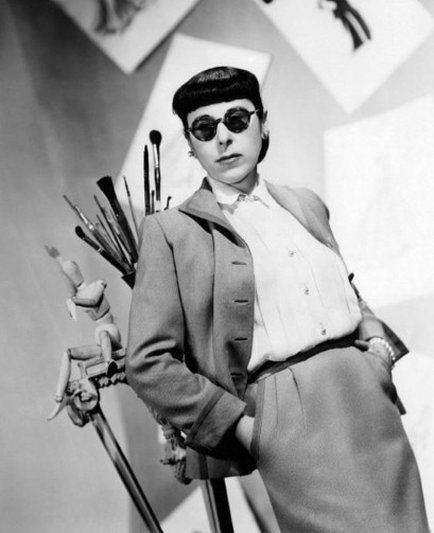 In all the superhero movies, we always get the origin story where Hollywood tries to make us believe that, for example, Peter Parker made his own Spidey suit by himself. We see him drawing it and it looks great. Then we see his hand-made version for his wrestling debut and it looks amateurish as hell, which is what you'd expect. So then the movie takes a gigantic leap of storytelling and shows us his new and improved suit that came from... where? And it's perfect. See what I mean? just look at the difference between the two. Like all other comic book nerds who sew, Tumblr user Fortheloveofplaid, immortalized what we were all thinking: "The most implausible thing about superhero movies is that these guys make their own suits. Like seriously, those toxic chemicals did NOT give you the ability to sew stretch knits. Do you even own a serger?" And the obvious answer to that is, No, they don't. There's another, better response waiting for you at the end of this piece. I wish I'd written it, but I didn't. Keep reading, it's worth the wait. Edith Head was an American costume designer, the daughter of a German Jewish immigrant father and Austrian/Bavarian Jewish mother. She began her career in Hollywood in 1924 as a costume sketch artist. She rose through the ranks to become head of Paramount's costume department and later Univeral's. She was nominated for 30 Oscars and won 8. She's a hero of mine for many reasons, but first and foremost it was her moxy to lie in two of her early job interviews in order to get the job she wanted. She had a BA degree in French from UC Berkley and an MA in Romance Languages from Stanford. She got hired at an all girl's school in Hollywood to teach French, but wanted a higher salary, so she lied and said she could teach art as well. It worked because they hired her to teach both classes. She then enrolled in evening art classes at the local college to stay one step ahead of her students. When she applied for the job at Paramount to be a costume sketch artist, a job which she had zero experience in, she borrowed sketches from all her night-school classmates and took them to her interview, claiming them as her own. Based on her wide range of styles, she was hired on the spot. I can't imagine what her first few weeks on the job were like. I would have been terrified, I imagine that she was not. I imagine she made a lot of coffee, asked a lot of questions, and probably got her night-school friends to help her out. She clearly learned on the job, took direction and criticism well, and acted professionally. Whatever she did, it worked, but here's the thing, she kept getting promoted not because her sketching ability was all that and a bag of crisps. In fact as legend has it, she didn't even know (or care) what the backs of her costumes looked like. She never drew the backs of the gowns because no one was going to film the back of the Hollywood starlet. So, no, her skills as an artist weren't what kept the promotions coming, it was because she was so damn good at working with the celebrities, especially the women. She had a trick that she followed vehemently with all the superstars: She wore the same thing for work every single day; she had many versions of the same neutral two piece suit. She wore minimal makeup and jewelry, kept her hair tied back, and wore big clunky glasses and low chunky heels. She was always neat, pressed, tailored, but subdued. In the fittings, when the star was trying on her costume and looked in the mirror, Edith was in her plain grey suit standing slightly behind and to the left of the starlet in her high fashion gown. By comparison, the star always looked like a million bucks. Her Jedi mind games worked every single time. During her lifetime she authored two books, The Dress Doctor and, not surprisingly, How to Dress for Success. She died in 1981 four days before her 84th birthday, having 444 costume design credits to her name. She is a Hollywood legend and a superhero to costume designers all over the world but she died never having designed any supersuits. So why have I spent all this time telling you about her? In 2004, Edith got memorialized in The Incredibles as Edna Mode, the super suit designer. In case you've been living under a rock these last thirteen years and are not eagerly awaiting The Incredibles II, due out in June, 2018, here's a brief summing up of the plot from Edna's point of view: Edna has made a career of designing suits for superheroes, most notably Mr. Incredible and his future wife, Elastigirl, until events happened that caused the world to fear their powers, forcing them to go underground. Our intrepid superheroes assume normal identities (and jobs) as Bob and Helen Parr. They have three kids--Violet, Dash, and Jack Jack--all with superpowers as well, but not able to use them openly. Bob is seduced into resuming his old Superhero life and in the course of sneaking around to save the world, tears his old supersuit, forcing him to go to Edna for a patch job. What has Edna been doing all this time, you ask? When all the supers were forced underground this left Edna with a lack of supers to design for. Bob comments that he noticed she had a fashion show in Milan recently. Edna has had to resort to designing for "super models" which she scoffs at, remarking that she used to design for "GODS!" She is having none of Bob's desire for just a patch job and instead designs new supersuits for him and the rest of the family. In the course of discussing her designs with Bob, Edna has two brilliant things to say on the topic, the first of which is this quote: And the second thing is this: "No Capes!" Apparently, capes get you killed. Who would have realized? Bob never put two and two together and denies it the whole time Edna is reminding him of each and every Super that's died due to a cape getting caught in something. After this scene you know Superman, Batman, Robin, and Dr. Strange are somewhere out there counting their lucky stars and seriously reconsidering their fashion choices. Our next clip occurs when Helen goes to see Edna to find out what the hell Bob has been up to only to find out that Edna's made new supersuits for everyone and thinks Helen is there to pick them up. When you watch the clip you'll notice that Edna has designed each supersuit specifically to withstand the stress put on the fabric by the wearers' abilities: Helen's is able to stretch as far as she can, Violet's fabric becomes transparent when she does, Dash's can withstand the incredible amount of friction his super speed generates, and Jack Jack's covers all contingencies, since no one knows what his powers are yet. All of them are also capable of withstanding the most violent assault from a variety of weapons. "And now it's machine washable, that's a new feature." Edna adds. Here's the family in their new suits. Clearly Edna knows her way around stretchy fabrics and owns a serger. Update with IRL costume DesignersI've included a gallery of the actual costume designers who actually had to design and build all of these amazing supersuits for the TV shows and films. Hovering over the faces will bring up the names and their credits so you can see what your favorite supersuit designer looks like. To get back to Fortheloveofplaid's initial complaint, here is the better response I promised by Tumblr user Kryaneko, who clearly knows her way around a costume shop: "I feel like there’s this little secret place in the middle of some seedy New York business neighborhood, back room, doesn’t even have a sign on the door, but within three days of using their powers in public or starting a pattern of vigilante-ism, every budding superhero or supervillain gets discreetly handed a scrap of paper with that address written on it. Inside there’s this little tea table with three chairs, woodstove, minifridge, work table, sewing machines, bolts and bolts of stretch fabrics and maybe some kevlar, and two middle-aged women with matching wedding rings and sketchbooks. And they invite you to sit down, and give you tea and cookies, and start making sketches of what you want your costume to look like, and you get measured, and told to come back in a week, and there’s your costume, waiting for you. The first one is free. They tell you the price of subsequent ones, and it’s based on what you can afford. You have no idea how they found out about your financial situation. You try it on, and it fits perfectly, and you have no idea how they managed that without measuring you a whole lot more thoroughly than they did. They ask you to pose for a picture with them. For their album, they say. The camera is old, big, the sort film camera artists hunt down at antique stores and pay thousands for, and they come pose on either side of you and one of them clicks the camera remotely by way of one of those squeeze-things on a cable that you’ve seen depicted from olden times. That one (the tall one, you think, though she isn’t really, thin and reminiscent of a Greek marble statue) pulls the glass plate from the camera and scurries off to the basement, while the other one (shorter, round, all smiles, her shiny black hair pulled up into a bun) brings out a photo album to show you their work. Inside it is … everyone. Superheroes. Supervillains. Household names and people you don’t recognize. She flips through pages at random, telling you little bits about the guy in the purple spangly costume, the lady in red and black, the mysterious cloaked figure whose mask reveals one eye. As she pages back, the costumes start looking really convincingly retro, and her descriptions start having references to the Space Race, the Depression, the Great War. The other lady comes up, holding your picture. You’re sort of surprised to find it’s in color, and then you realize all the others were, too, even the earliest ones. There you are, and you look like a superhero. You look down at yourself, and feel like a superhero. You stand up straighter, and the costume suddenly fits a tiny bit better, and they both smile proudly. * The next time you come in, it’s because the person who’s probably going to be your nemesis has shredded your costume. You bring the agreed-upon price, and you bake cupcakes to share with them. There’s a third woman there, and you don’t recognize her, but the way she moves is familiar somehow, and the air seems to sparkle around her, on the edge of frost or the edge of flame. She’s carrying a wrapped brown paper package in her arms, and she smiles at you and moves to depart. You offer her a cupcake for the road. The two seamstresses go into transports of delight over the cupcakes. You drink tea, and eat cookies and a piece of a pie someone brought around yesterday. They examine your costume and suggest a layer of kevlar around the shoulders and torso, since you’re facing off with someone who uses claws. They ask you how the costume has worked, contemplate small design changes, make sketches. They tell you a story about their second wedding that has you falling off the chair in tears, laughing so hard your stomach hurts. They were married in 1906, they say, twice. They took turns being the man. They joke about how two one-ring ceremonies make one two-ring ceremony, and figure that they each had one wedding because it only counted when they were the bride. They point you at three pictures on the wall. A short round man with an impressive beard grins next to a taller, white-gowned goddess; a thin man in top hat and tails looks adoringly down at a round and beaming bride; two women, in their wedding dresses, clasp each other close and smile dazzlingly at the camera. The other two pictures show the sanctuaries of different churches; this one was clearly taken in this room. There’s a card next to what’s left of the pie. Elaborate silver curlicues on white, and it originally said “Happy 10th Anniversary,” only someone has taken a Sharpie and shoehorned in an extra 1, so it says “Happy 110th.” The tall one follows your gaze, tells you, morning wedding and evening wedding, same day. She picks up the card and sets it upright; you can see the name signed inside: Magneto. You notice that scattered on their paperwork desk are many more envelopes and cards, and are glad you decided to bring the cupcakes. * When you pick up your costume the next time, it’s wrapped up in paper and string. You don’t need to try it on; there’s no way it won’t be perfect. You drink tea, eat candies like your grandmother used to make when you were small, talk about your nights out superheroing and your nemesis and your calculus homework and how today’s economy compares with the later years of the Depression. When you leave, you meet a man in the alleyway. He’s big, and he radiates danger, but his eyes shift from you to the package in your arms, and he nods slightly and moves past you. You’re not the slightest bit surprised when he goes into the same door you came out of. * The next time you visit, there’s nothing wrong with your costume but you think it might be wise to have a spare. And also, you want to thank them for the kevlar. You bring artisan sodas, the kind you buy in glass bottles, and they give you stir fry, cooked on the wood-burning stove in a wok that looks a century old. There’s no way they could possibly know that your day job cut your hours, but they give you a discount that suits you perfectly. Halfway through dinner, a cinderblock of a man comes in the door, and the shorter lady brings up an antique-looking bottle of liquor to pour into his tea. You catch a whiff and it makes your eyes water. The tall one sees your face, and grins, and says, Prohibition. You’re not sure whether the liquor is that old, or whether they’ve got a still down in the basement with their photography darkroom. Either seems completely plausible. The four of you have a rousing conversation about the merits of various beverages over dinner, and then you leave him to do business with the seamstresses. * It’s almost a year later, and you’re on your fifth costume, when you see the gangly teenager chase off a trio of would-be purse-snatchers with a grace of movement that can only be called superhuman. You take pen and paper from one of your multitude of convenient hidden pockets, and scribble down an address. With your own power and the advantage of practice, it’s easy to catch up with her, and the work of an instant to slip the paper into her hand. * A week or so later, you’re drinking tea and comparing Supreme Court Justices past and present when she comes into the shop, and her brow furrows a bit, like she remembers you but can’t figure out from where. The ladies welcome her, and you push the tray of cookies towards her and head out the door. In the alleyway you meet that same giant menacing man you’ve seen once before. He’s got a bouquet of flowers in one hand, the banner saying Happy Anniversary, and a brown paper bag in the other. You nod to him, and he offers you a cupcake. Source: Chaos Cat (loves this thing in particular) 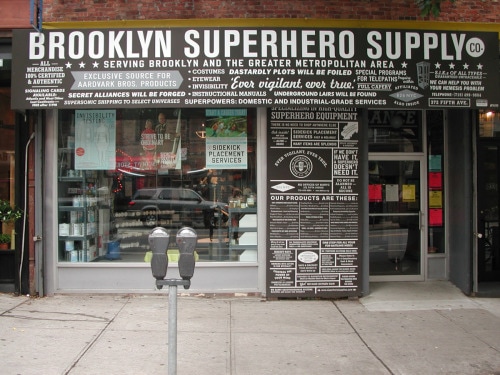 Not quite as on the Q.T. as the shop described above, however this store has the advantage of actually existing IN REAL LIFE. It's a front for an afterschool literacy and writing program. The kids come in through a secret entrance in the back which leads through a cape-testing wind tunnel, and into the secret back room superhero lair. You can read all about them as well as support their efforts by making an online purchase here: Brooklyn Superhero Supply And to finally wind this up and get back to what Michael Chabon said about supersuits being pointless: You are just plain WRONG. Go ask any of the writers who come up with the stories or the artists that draw the characters: the pencilers, the inkers, the colorists, the guys who do the lettering, that one lucky and more famous guy who gets to do the cover. All of those people will tell you that the suit exists for one reason and one reason only and it's a reason that recent DC and long ago Sony franchise producers and directors have forgotten or ignored. Because the suits are EXCITING AND COLORFUL and we mere humans wish we had them, because if we did we would wear them every damn day. They signify "specialness" more clearly than any other element. They single you out. They are meant to call attention to the wearer, moreso than what anybody else in the room or on the planet is wearing. They tell the world that the person who is wearing this colorful, outrageous costume is a BIG, DAMN HERO, SIR! and is proud of it. And yes, we the fans know that it's not the cape that makes Superman fly. And yes, we know that IRL we can't either. Yes, we know we're fat and saggy and too old now to be mistaken for Wonder Woman, but by the gods we can dream and that is the whole point of escapism. So do not bother to tell me that I look ridiculous in my cinnamon-bun hair and long white gown or my teddy bear-patched, dirty green coveralls with my Japanese Hapi coat and paper umbrella. I don't care and neither do any of the other millions of comics fans and cosplaying geeks around the world. The supersuit is a symbol of hope and right now we all could use some hope. And if you need any further evidence to prove that I'm right, I will leave you with my friend Marnie Abraham's wedding photo. Stay tuned for Part Three: The DC Universe
and later, Part Four: Marvel and if I survive that, then Part Five: Supervilians.
1 Comment
|
CategoriesArchives
July 2024
|
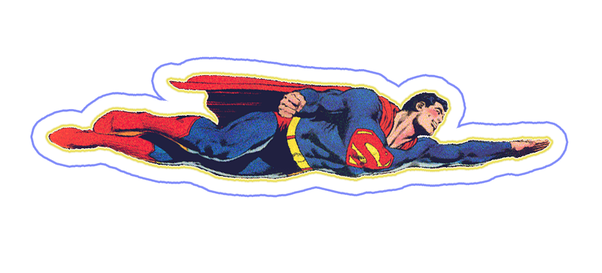





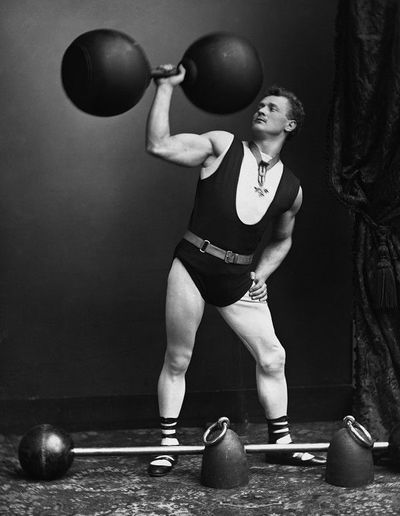









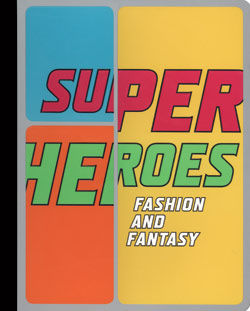



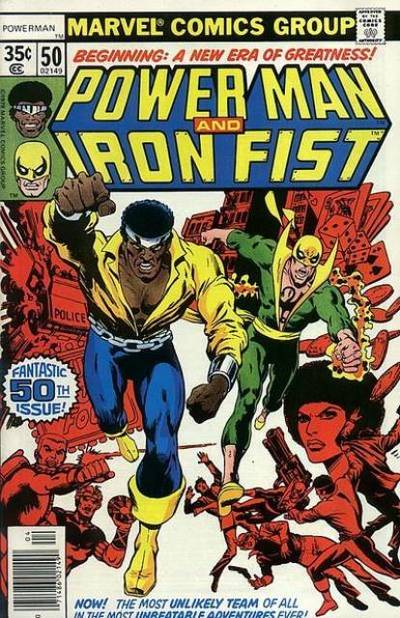
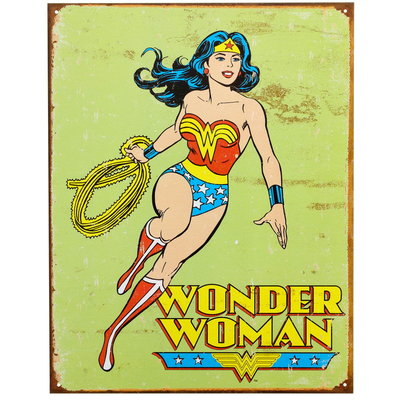
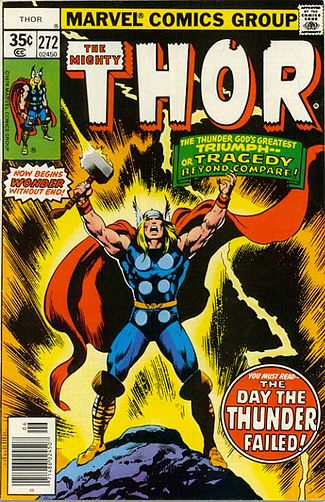

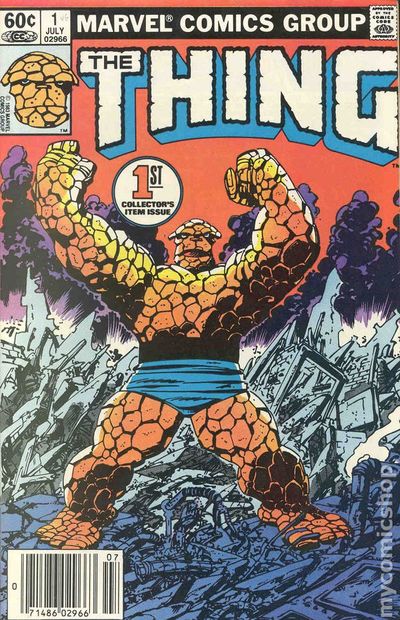




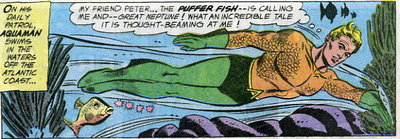




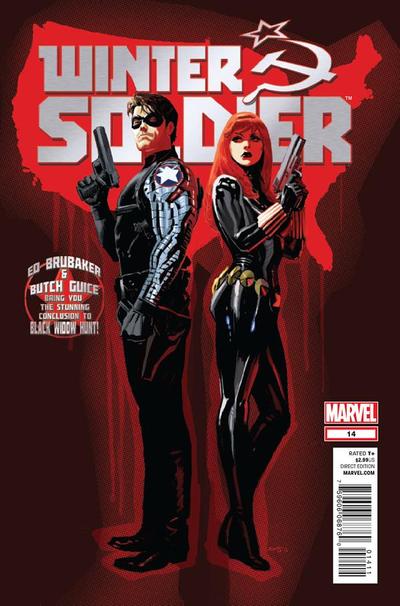

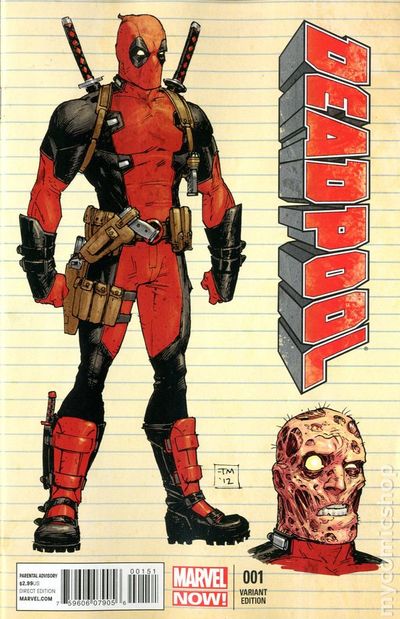

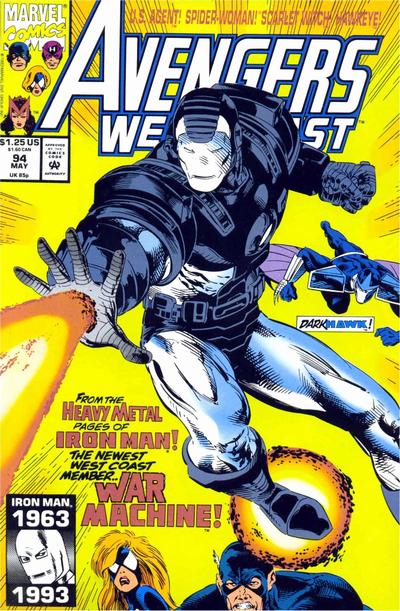
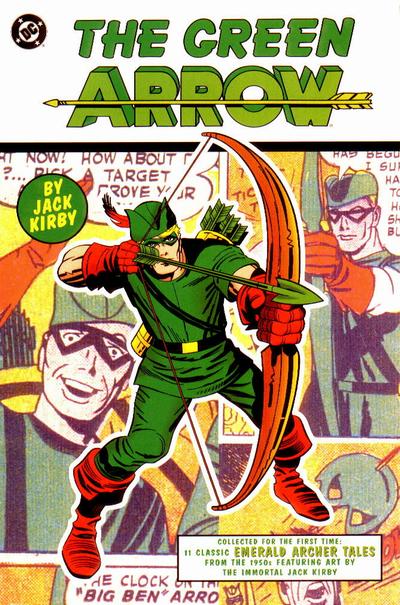










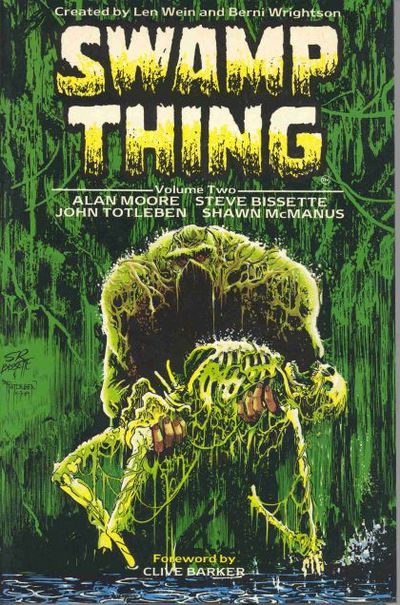




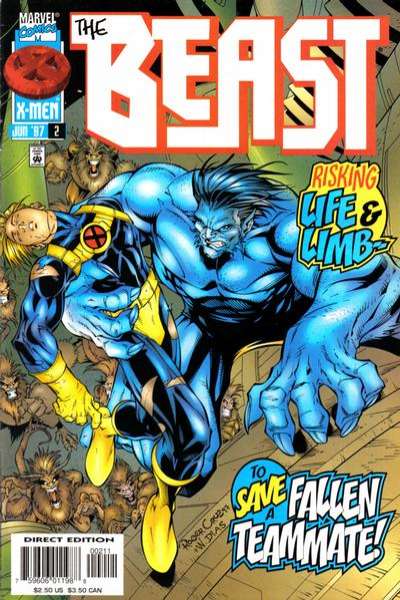









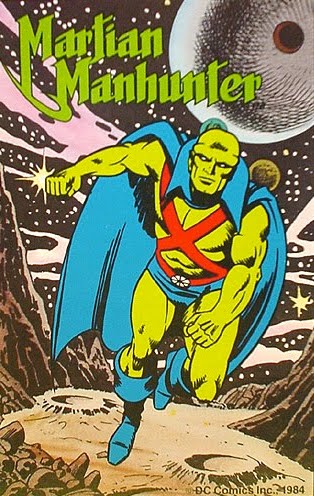


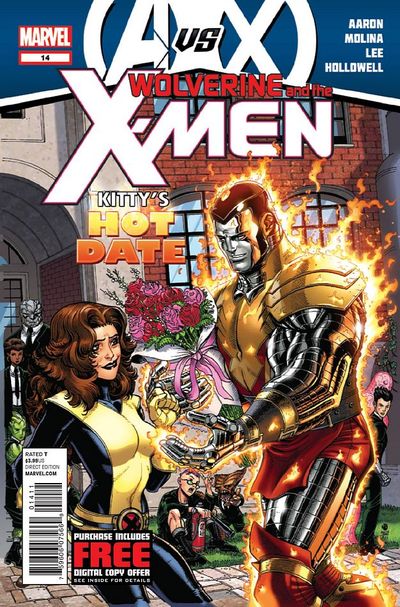

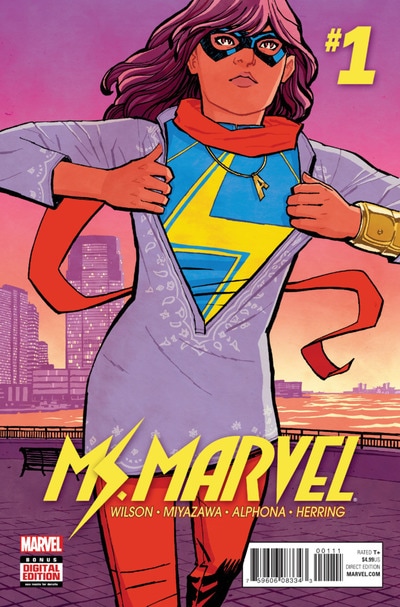







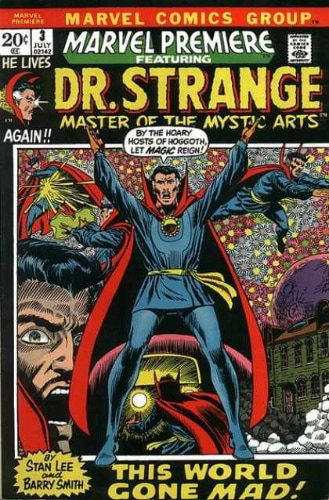
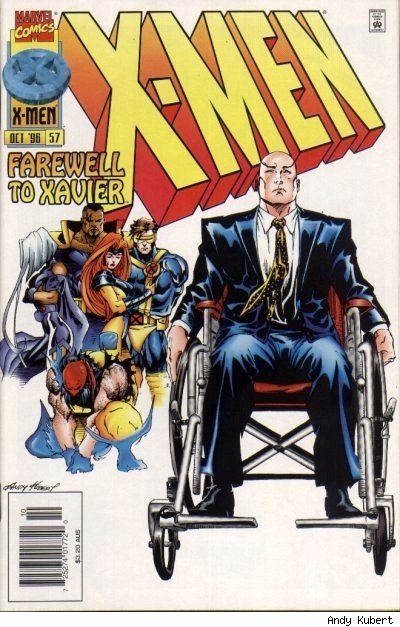




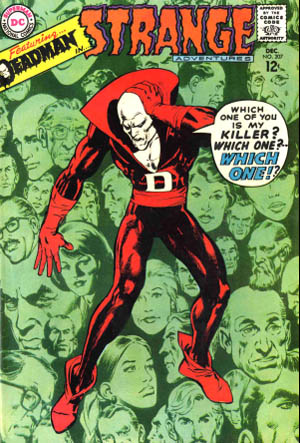







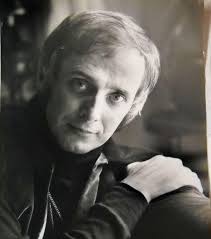

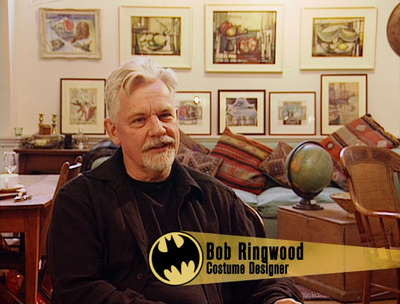






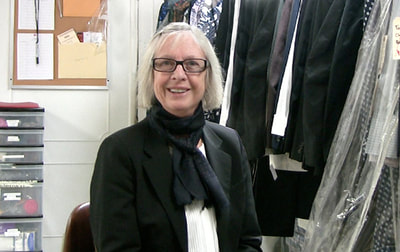





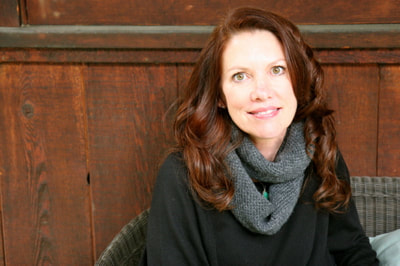










 RSS Feed
RSS Feed